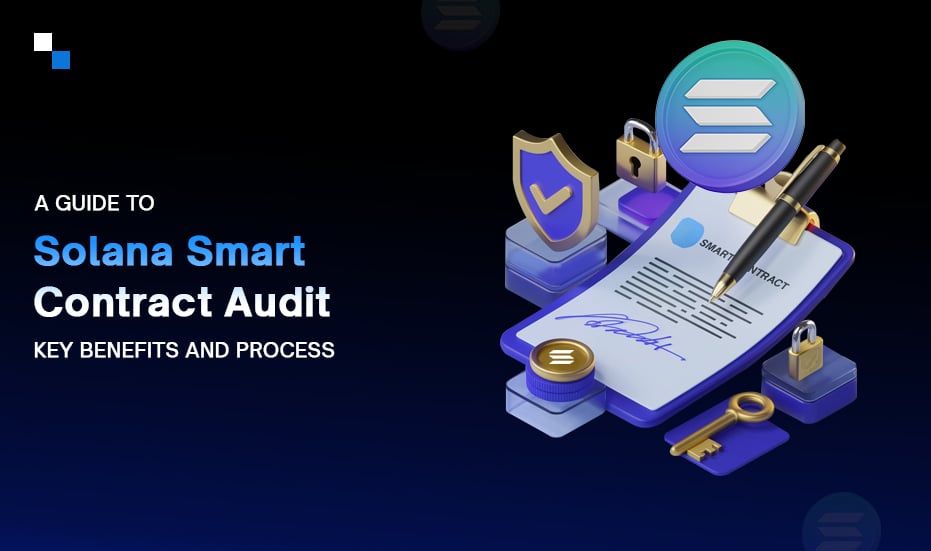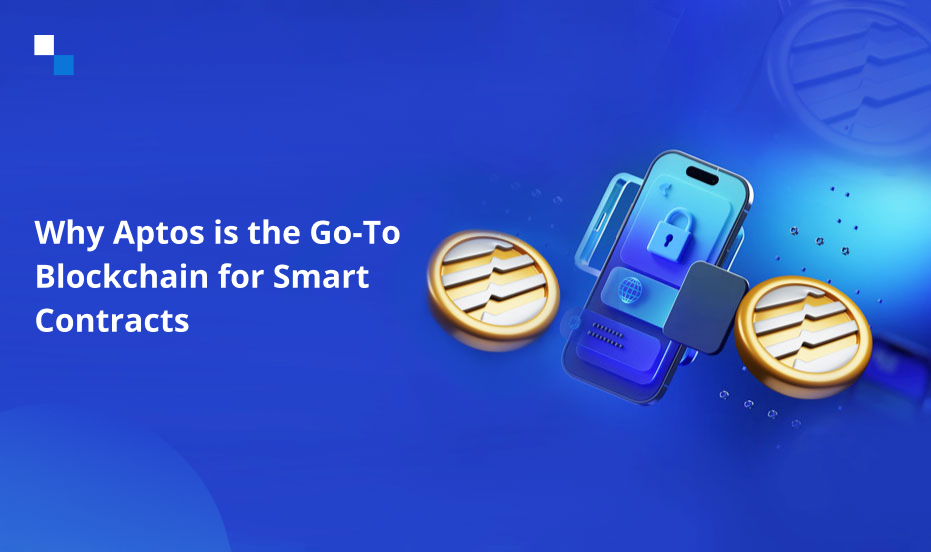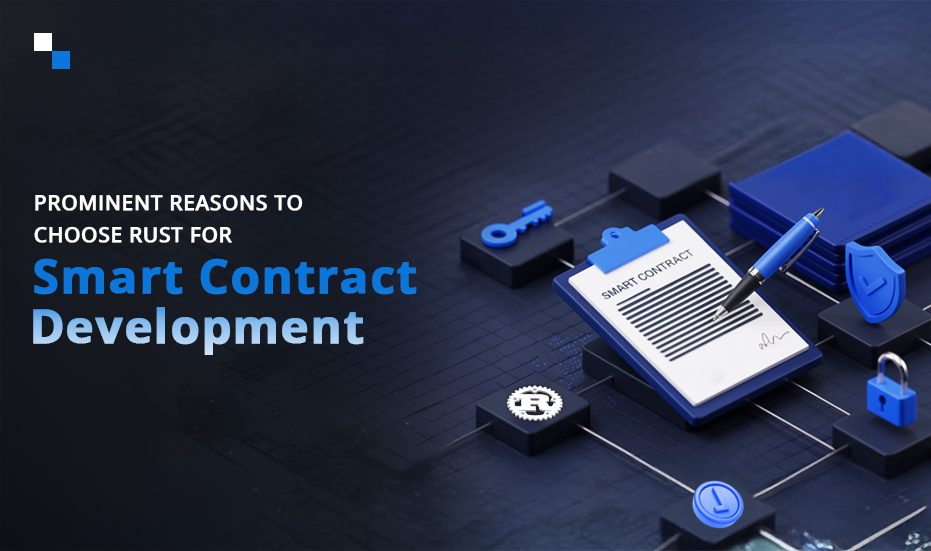
MEV Trading Bot: Understanding its Types, Working and Benefits
March 19, 2024
Charting Future Growth with DeFi Exchange Development for 2024 & Beyond
March 19, 2024Flash loan arbitrage has emerged as a lucrative opportunity for traders to capitalize on price differentials across various platforms. At the heart of this innovation lies the flash loan smart contract that empowers traders to execute arbitrage opportunities swiftly and efficiently.
Leveraging smart contracts, this innovative approach enables users to exploit temporary market inefficiencies without the need for substantial capital. Smart contracts enable users to automate the process of executing flash loan arbitrage strategies by leveraging predefined logic and algorithms to identify, borrow, and execute profitable trades within a single transaction block.
However, developing a smart contract for flash loan arbitrage is a challenging yet rewarding endeavor that requires a deep understanding of DeFi principles, blockchain technology, and smart contract development. This blog sheds light on the following aspects of flash loan smart contracts:
- Ways to Optimize Flash Loan Arbitrage Smart Contract
- A Step-by-Step Guide to Developing Smart Contracts for Flash Loan Arbitrage
- Best Practices for Safeguarding Flash Loan Smart Contracts
- The Future of Flash Loans and Arbitrage Strategies in DeFi
- Real-World Use Cases of Flash Loans Beyond Traditional Finance
Ways to Optimize Flash Loan Arbitrage Smart Contract
To harness the full potential of flash loan arbitrage, it’s essential to incorporate advanced techniques that enhance efficiency, reduce risks, and improve profitability.
- Gas Optimization
In the realm of smart contract arbitrage, transaction speed and cost-effectiveness are paramount. Gas optimization involves refining the smart contract code to reduce the amount of gas required for transactions. Techniques such as loop unrolling, using cheaper storage variables, and minimizing external contract calls can significantly decrease gas costs while enhancing the profitability of arbitrage transactions.
- Oracle Integration
Accurate and real-time price data are vital for identifying profitable arbitrage opportunities. Integrating oracles into flash loan smart contracts ensures access to reliable and timely market data from various sources. Advanced smart contracts can leverage multiple oracles or even aggregate data to mitigate the risk of price manipulation and ensure that arbitrage decisions are based on accurate market conditions.
- Automated Arbitrage Algorithms
To maximize opportunities, flash loan arbitrage smart contracts can incorporate automated algorithms that continuously scan multiple exchanges and liquidity pools for price discrepancies. These algorithms can be optimized to account for transaction fees, gas costs, and slippage while ensuring that only the most profitable trades are executed. Advanced techniques such as machine learning models can further refine these algorithms.
- Cross-Chain Functionality
As the DeFi ecosystem expands across multiple blockchain platforms, flash loan arbitrage strategies must evolve to operate cross-chain. Advanced smart contracts can leverage cross-chain interoperability protocols to execute arbitrage trades across different blockchains. This opens up a broader range of arbitrage opportunities and can lead to more efficient capital utilization.
A Step-by-Step Guide to Developing Smart Contracts for Flash Loan Arbitrage
Step 1: Define the Scope and Objectives of Your Smart Contract
Outline the specific functionalities and goals of your flash loan arbitrage smart contract. Determine the parameters for identifying arbitrage opportunities, including price differential thresholds, liquidity requirements, and transaction execution logic. Clarify the roles and permissions of involved parties, such as borrowers, arbitrageurs, and liquidity providers. Establish clear success criteria and performance metrics to measure the effectiveness of your smart contract.
Step 2: Conduct Thorough Research on Market Dynamics
Begin by conducting in-depth research on flash loan arbitrage strategies, including market dynamics, liquidity pools, and potential risks. Familiarize yourself with popular DeFi platforms offering flash loans, such as Aave or dYdX, and study real-world examples of successful arbitrage opportunities. Understanding the intricacies of flash loan arbitrage bot will lay a solid foundation for developing an effective smart contract.
Step 3: Choose the Right Development Environment and Tools
Select a suitable blockchain platform and development environment for building your smart contract. Ethereum is a popular choice due to its robust infrastructure and widespread adoption within the DeFi ecosystem. Set up your development environment, including a compatible IDE such as Remix or Truffle, and install necessary dependencies such as Web3.js for interacting with the Ethereum blockchain.
Step 4: Write and Deploy Your Smart Contract
Begin writing the code in Solidity for your flash loan arbitrage smart contract. Implement the predefined logic for identifying arbitrage opportunities, borrowing flash loans, executing trades, and repaying the borrowed amount while ensuring adherence to best practices and security standards. Thoroughly test your smart contract in a local development environment to identify and fix any potential vulnerabilities or bugs.
Step 5: Test and Audit Your Smart Contract
Prior to deployment, conduct comprehensive testing and auditing of your smart contract to ensure its reliability, security, and efficiency. Utilize automated testing frameworks such as Truffle or OpenZeppelin to validate the functionality and performance of your smart contract under various scenarios. Consider engaging with reputable blockchain security firms or conducting formal code audits to identify and mitigate potential security vulnerabilities.
Step 6: Deploy Your Smart Contract to the Blockchain
Once your smart contract has passed rigorous testing and auditing, it’s time to deploy it to the Ethereum blockchain. Choose an appropriate deployment strategy, considering factors such as gas fees, transaction speed, and network congestion. Utilize Ethereum-compatible wallets or deployment tools such as MetaMask or Remix to initiate the deployment process while carefully following the necessary steps and confirming the transaction on the blockchain.
Step 7: Monitor and Optimize Your Smart Contract
After deployment, continuously monitor the performance and behavior of your flash loan arbitrage smart contract in the live environment. Implement robust monitoring and alerting mechanisms to detect any anomalies or unexpected behavior promptly. Analyze transaction data and performance metrics to identify areas for optimization and enhancement.

Best Practices for Safeguarding Flash Loan Smart Contracts
- Implement Access Controls and Permission Systems
To minimize the risk of unauthorized access and manipulation, implement robust access controls and permission systems within your flash loan smart contract. Define clear roles and permissions for different parties involved in the contract, such as borrowers, arbitrageurs, and administrators. Utilize Ethereum’s role-based access control mechanisms or custom access control logic to restrict privileged actions and ensure that only authorized entities can interact with critical functions.
- Utilize Multisignature Wallets for Key Management
Enhance the security of your flash loan smart contract by utilizing multisig wallets for key management and transaction authorization. Distribute control over key operations across multiple parties or signatories, requiring consensus and approval from a predefined quorum before executing sensitive transactions. This mitigates the risk of single points of failure and unauthorized transactions, providing an additional layer of security against malicious attacks.
- Implement Time-Lock Mechanisms and Emergency Stop Functions
Integrate time-lock mechanisms and emergency stop functions into your flash loan smart contract to mitigate the impact of unforeseen events and mitigate potential risks. Implement configurable time delays or cooldown periods for critical functions, allowing sufficient time for manual intervention or remediation in the event of suspicious activity or security breaches. Additionally, include emergency stop switches or circuit breakers that enable administrators to pause contract operations in case of emergencies or security incidents.
The Future of Flash Loans and Arbitrage Strategies in DeFi

- Unlocking Liquidity and Efficiency
Flash loans have revolutionized the DeFi space by providing instant, uncollateralized loans that enable users to access significant liquidity without requiring traditional collateral. This has democratized access to capital and unlocked new opportunities for trading, arbitrage, and liquidity provision. Moving forward, we can expect flash loans to become even more prevalent, with new protocols and platforms offering enhanced features and improved accessibility.
- Expanding the Scope of Arbitrage Strategies
Arbitrage strategies in DeFi have traditionally focused on exploiting price differentials between decentralized exchanges and liquidity pools. However, as the DeFi ecosystem matures and diversifies, we can expect to see a broader range of arbitrage opportunities emerging. This may include cross-chain arbitrage, yield farming arbitrage, and algorithmic trading strategies that leverage advanced analytics and automation to optimize returns.
- Enhanced Security and Risk Management
While flash loan arbitrage bot development strategies offer significant opportunities for profit, they also come with inherent risks, including smart contract vulnerabilities, market volatility, and regulatory uncertainty. In the future, we can expect to see greater emphasis on security and risk management practices within the DeFi community. This may include more rigorous code audits, improved risk assessment tools, and enhanced transparency and disclosure standards.
- Regulatory Considerations
As the DeFi space continues to gain mainstream attention, regulators around the world are taking notice. While the decentralized nature of DeFi presents unique challenges for regulatory oversight, we can expect to see increased scrutiny and potential regulatory interventions in the future. This may include measures to address concerns related to investor protection, anti-money laundering, and KYC requirements.
Real-World Use Cases of Flash Loans Beyond Traditional Finance
While flash loans are commonly associated with financial applications in the DeFi space, their potential extends far beyond traditional finance.
- Supply Chain Financing
In the realm of supply chain management, flash loans can facilitate instant financing for suppliers and manufacturers. By leveraging flash loans, businesses can optimize cash flow, streamline operations, and mitigate liquidity constraints. For example, a manufacturer facing temporary cash flow challenges can use flash loans to cover immediate expenses while awaiting payment from customers.
- Real Estate Transactions
Flash loans can revolutionize the real estate industry by enabling instant funding for property purchases and transactions. Buyers can leverage flash loans to secure immediate financing for property acquisitions while eliminating the need for traditional mortgage lenders and expediting the closing process. Additionally, flash loans can facilitate quick bridge financing for real estate developers while allowing them to seize lucrative investment opportunities.
- Insurance Claim Settlements
Flash loans offer a novel solution for expediting insurance claim settlements and payouts. Insurers can utilize flash loans to instantly disburse funds to policyholders in the event of emergencies or accidents. This streamlined approach enhances customer satisfaction, reduces administrative overhead, and accelerates the claims process, ultimately benefiting both insurers and policyholders.
- Crowdfunding and Fundraising
Flash loans can revolutionize the crowdfunding and fundraising landscape by providing instant capital for projects and initiatives. Entrepreneurs and startups can leverage flash loans to kickstart fundraising campaigns while accessing immediate funding without the need for traditional fundraising platforms or intermediaries. This decentralized approach democratizes access to capital and empowers innovators to bring their ideas to fruition.

Conclusion
By exploring non-financial use cases for flash loans across various industries and sectors, businesses and organizations can unlock new opportunities for innovation, efficiency, and social impact. As we move forward, the continuous innovation and refinement of Flash Loan Arbitrage Smart Contracts will undoubtedly play a pivotal role in shaping the future of decentralized finance.
Remember, success in Flash Loan Arbitrage depends not only on technical proficiency but also on prudent risk management, continuous learning, and adaptability to evolving market conditions. Stay informed, stay vigilant, and embrace the transformative potential of decentralized finance as you embark on your journey to master Flash Loan Arbitrage with Smart Contracts.
In case of any further queries, feel free to get in touch with a smart contract development company like Antier. The team of experts at Antier can provide you with the best flash loan arbitrage bot development services.




